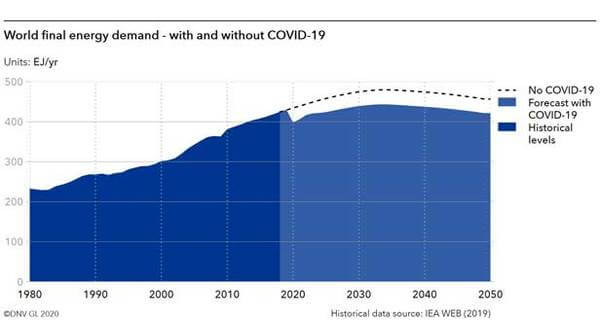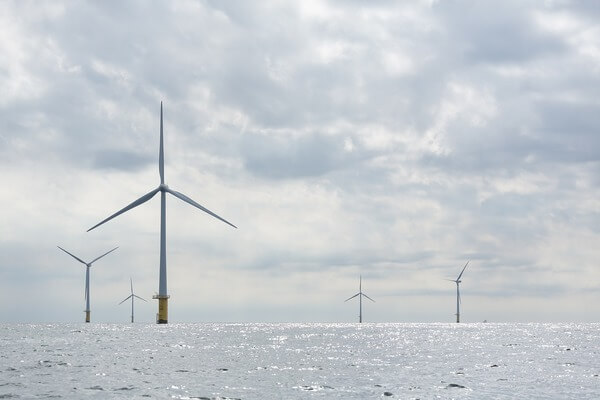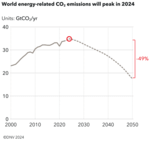News Release from windfair.net
Wind Industry Profile of
Where Do We Go From Here?
The central question at the presentation of DNV GL's annual Energy Outlook2020 was what influence COVID-19 and the lockdown would have on the energy transition. For several weeks, sometimes even months, production facilities were at a standstill and global CO2 emissions fell significantly. Is this reflected in the effects of climate change?
Remi Erikson, DNV GL CEO and Group President, does not give the all-clear: “COVID-19 has changed the global energy outlook, yet the global climate crisis remains as urgent as before the pandemic. Early optimism about decreased air pollution has been replaced by the reality that it's not caused by a more decarbonized energy mix but by short term changes owed to the pandemic. We can transition faster with the technology at hand, but now more than ever before, we require national and sectorial policy incentives to bring us to the ambitions of Paris.”
The world is currently heading for a global warming of 2.1 degrees Celsius by 2050 - as opposed to the 1.5 degrees aim in the Paris climate targets. Nonetheless, COVID-19 has left its mark, both in the short and long term. The ongoing effects of the pandemic will take the wind out of the world economy's sails for many years - world GDP will shrink by 9% in 2050 compared to pre-pandemic forecasts.

Global energy demand is decreasing (Image: DNV GL)
Energy demand up to 2050 will also be 6-8 percent lower annually than previously predicted. The pandemic has led to significant changes in people's behaviour, as evidenced by the reduction in long-distance travel and the increase in home working, both of which are responsible for the peak in transport energy and oil demand in 2019.
Fossil energies will play an increasingly minor role. Only gas will remain important, especially in relation to hydrogen. Meanwhile, the demand for renewables will continue to rise. The consistent further development of innovative technologies and the advancement of sector coupling will remain decisive in this respect. Only if sectors such as transport and shipping can be electrified and energy efficiency further increased can CO2 emissions be reduced significantly.

Up to 3,000 offshore wind farms could be standing in the world's oceans by 2050, many of them with floating turbines (Image: Pixabay)
In the wind sector, experts expect a big leap forward, especially with regard to floating wind turbines: 250 gigawatts of floating turbines could be installed by 2050. Worldwide, forecasts predict 12,000 onshore wind farms and 3,000 offshore wind farms in 2050. This will be accompanied by the further development of batteries and storage facilities that ensure a constant distribution of electricity.
The Energy Outlook also offers hope, as the technologies needed to tackle climate change already exist today. They just need to be promoted accordingly and implemented more quickly. It is therefore fitting that positive decisions in this direction are currently being considered from Brussels. According to media reports, EU Commission President Ursula von der Leyen wants to push through a stronger climate target for Europe than has been discussed so far: the 27 EU Member States are to reduce their CO2 emissions by 55 percent by 2030. So far, only 40 percent had been mentioned.
This will hopefully send a strong signal to the rest of the world and, above all, to the many local governments and initiatives that are already pushing for tougher climate targets. But, DNV GL warns, all climate protection in Europe is useless if the world doesn't include Asia: If China and India alone will not engage in massive climate protection in the future, the global community has no chance of achieving its goals.
But if the pandemic has shown one thing, it is that humanity is in the same boat and can only stop climate change together.
- Author:
- Katrin Radtke
- Email:
- press@windfair.net
- Keywords:
- DNV GL, Energy Outlook, energy transition, corona, pandemic, COVID-19, energy demand, 2050, fossil, renewables, wind, offshore, onshore, floating


























